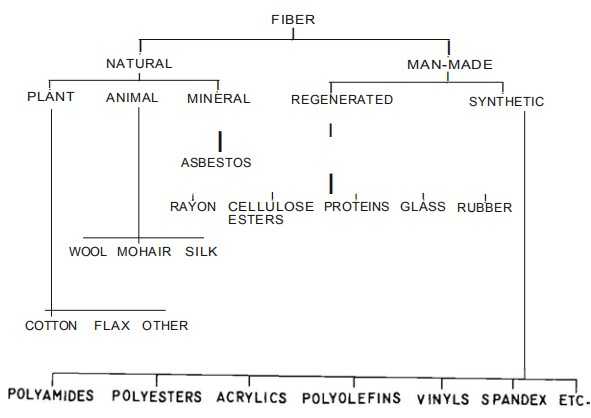Methods Of Classifying Textile Fibers

Textile fibers are normally broken down into two main classes, natural and man-made fibers. All fibers which come from natural sources (animals,plants, etc.) and do not require fiber formation or reformation are classed as natural fibers. Natural fibers include the protein fibers such as wool and silk, the cellulose fibers such as cotton and linen, and the mineral fiber asbestos. Man-made fibers are fibers in which either the basic chemical units have been formed by chemical synthesis followed by fiber formation or the polymers from natural sources have been dissolved and regenerated after passage through a spinneret to form fibers.

Figure 1-1
Those fibers made by chemical synthesis are often called synthetic fibers, while fibers regenerated from natural polymer sources are called regenerated fibers or natural polymer fibers. In other words, all synthetic fibers and regener-Fiber Theorv and Formationated fibers are man-made fibers, since man is involved in the actual fiber formation process. In contrast, fibers from natural sources are provided by nature in ready-made form.
The synthetic man-made fibers include the polyamides (nylon), poly�esters, acrylics, polyolefins, vinyls, and elastomeric fibers, while the regenerated fibers include rayon, the cellulose acetates, the regenerated proteins, glass and rubber fibers. Figure 1-1 shows a classification chart for the major fibers.
Another method of classifying fibers would be according to chemical structure without regard of the origin of the fiber and its starting mater�ials. In this manner all fibers of similar chemical structure would be classed together. The natural man-made fiber classification given in Figure 1-1 does this to a certain extent. In this way, all fibers having the basic cellulosic unit in their structures would be grouped together rather than separated into natural and man-made fibers.
2020-01-07 14:51
